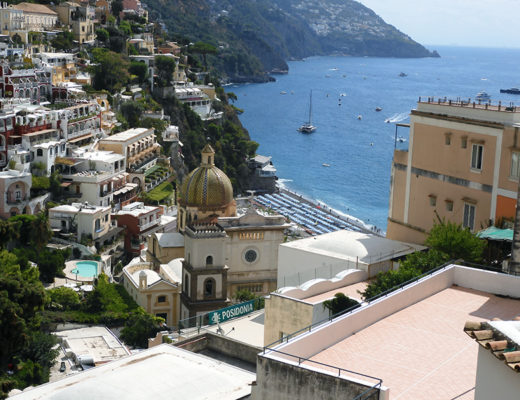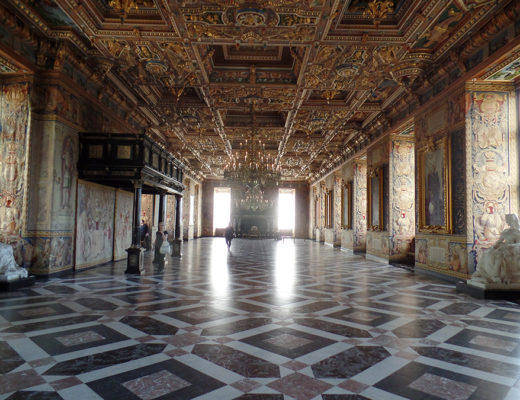The Tiber River flows through Rome. Has for as long as men can remember. The Tiber served as a defensive barrier during the Roman Empire. It kept the undesirables out. It also kept those who supported the city and its inhabitants living on the other side. That was true until recently, when tourists suddenly found good food, good wine, and interesting history that had been ignored.
We had the opportunity to visit Trastevere twice within a week. Both times on week nights. The first time we took a food tour, which visited seven locations. Only the first stop was remarkable for the food, where we had Roman fried artichoke hearts, which removed all but a few of the base leaves and proved to be crispy on the outside and soft and flavorful inside.
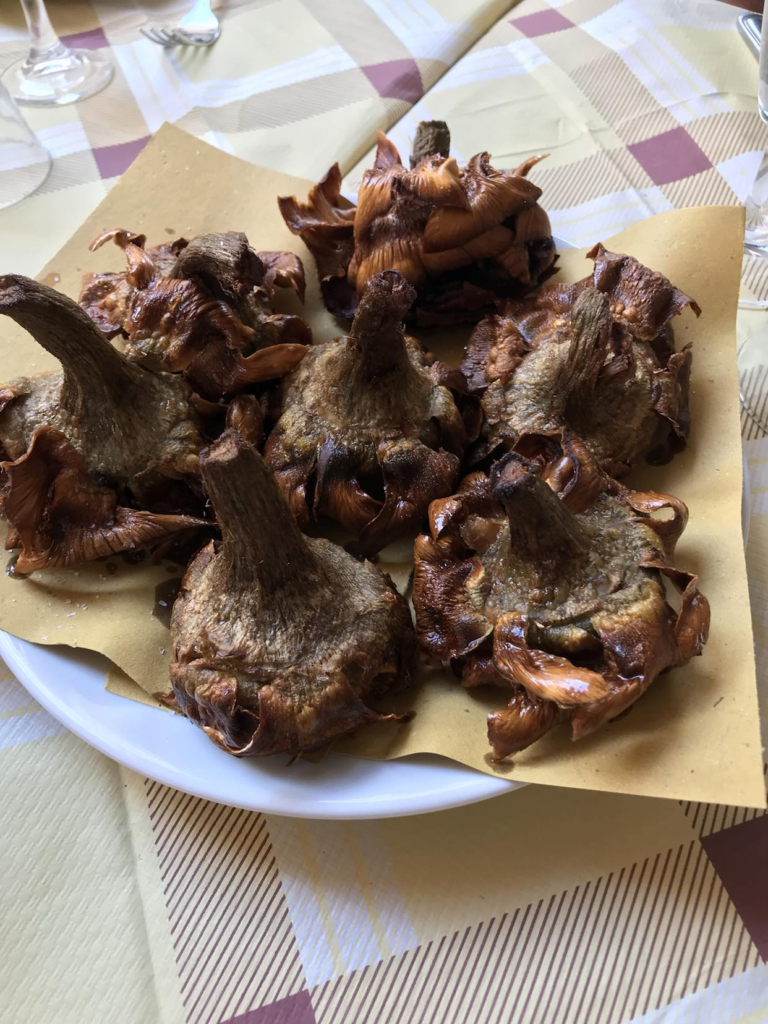
This stop also included a very soft burrata that was spread on toast like a crostini. Again, the flavor just knocked us out.

The second stop at Ristorante Spirito Di Vino is in an old Jewish synagogue, in what was the Jewish Quarter for centuries. What was curious to us was that the dish served was pork, which would never have been served in a synagogue. In any event, what was most impressive to us was the wine cellar below the restaurant. It went back nearly a thousand years and had over a thousand bottles. Our host showed where this cellar had been part of the building on the site before the synagogue. Probably the oldest wine cellar I have visited.
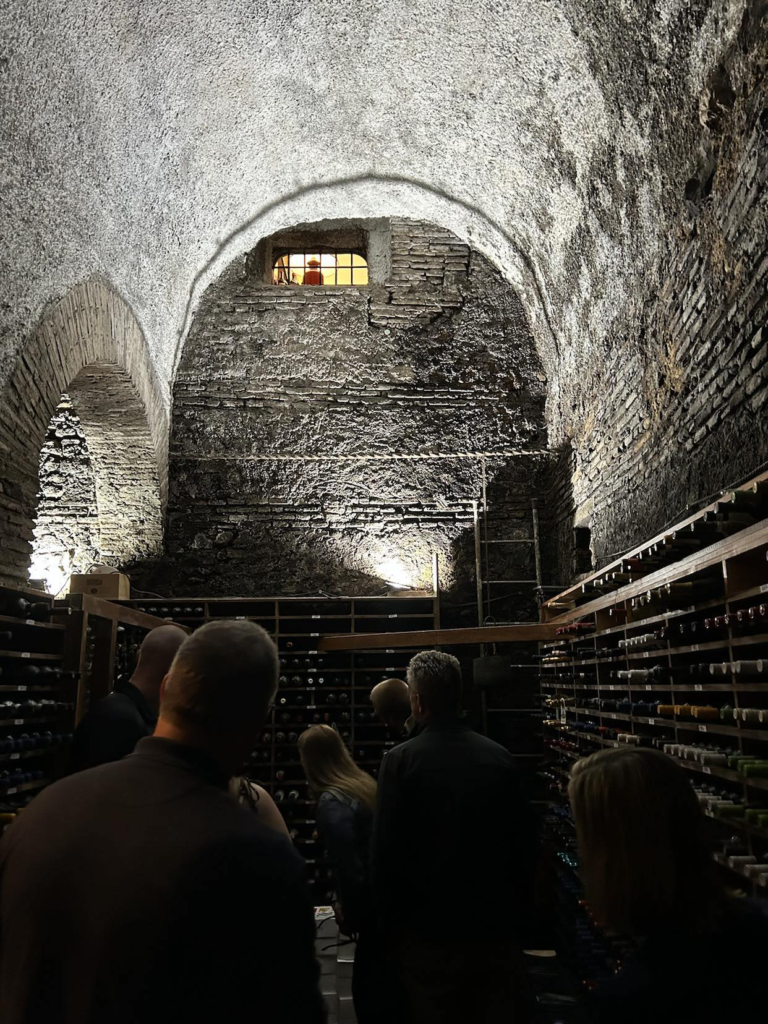
The other stops included a bakery, a butcher, a restaurant where we were served Cacio e Pepe and Amatriciana. What surprised us was they used rigatoni for the pasta for both. I have never seen Cacio e Pepe in this form. Both were okay, but not something we will try to duplicate at home.
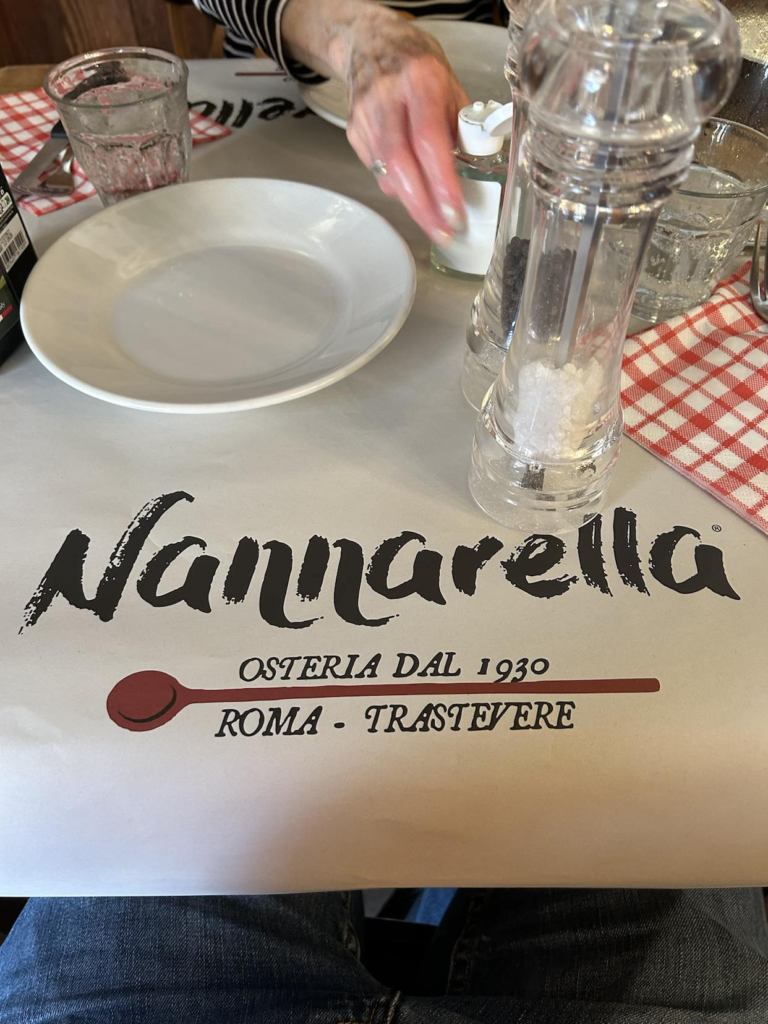
A week later we went to Nannarella. It is located inconspicuously on Piazza di S. Calisto. Except for the long lines of waiting local customers. On the way back to Rome our driver had informed us that there are two dishes that Rome is famous for. Cacio e Pepe and Carbonara. So, we ordered five dishes. We sampled each as there was too much food here. We started with the two the driver recommended in a head-to-head taste off. We added a Roman fried artichoke, a green salad and a pizza capricciosa.
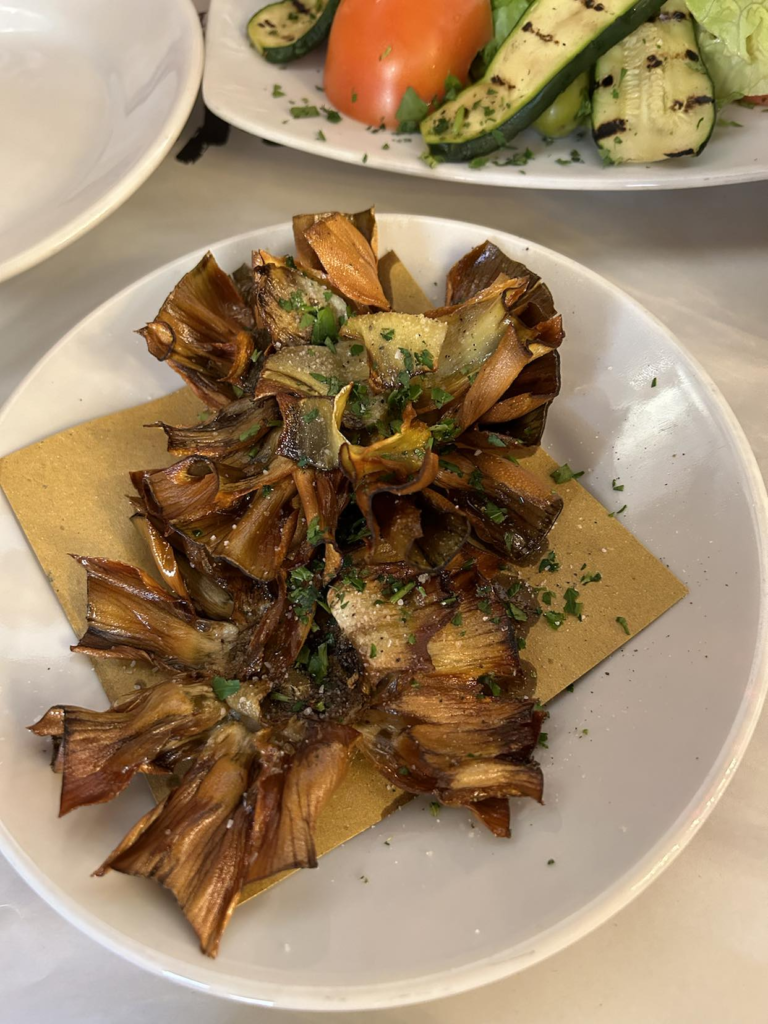
To say we were blown away is an understatement. The first surprise was that while Cacio e Pepe is the pasta d’jour, we both liked the carbonara better. It was creamier and had more flavor. We have made Cacio e Pepe and like it very much. What we believe made the difference is that when we make it at home, we reserve the pasta water and mix it in the final dish until it is reasonably creamy, although not like a sauce per se. Nonnarella seemed to be content to leave the pasta much drier than we do. Likely simply a taste preference.
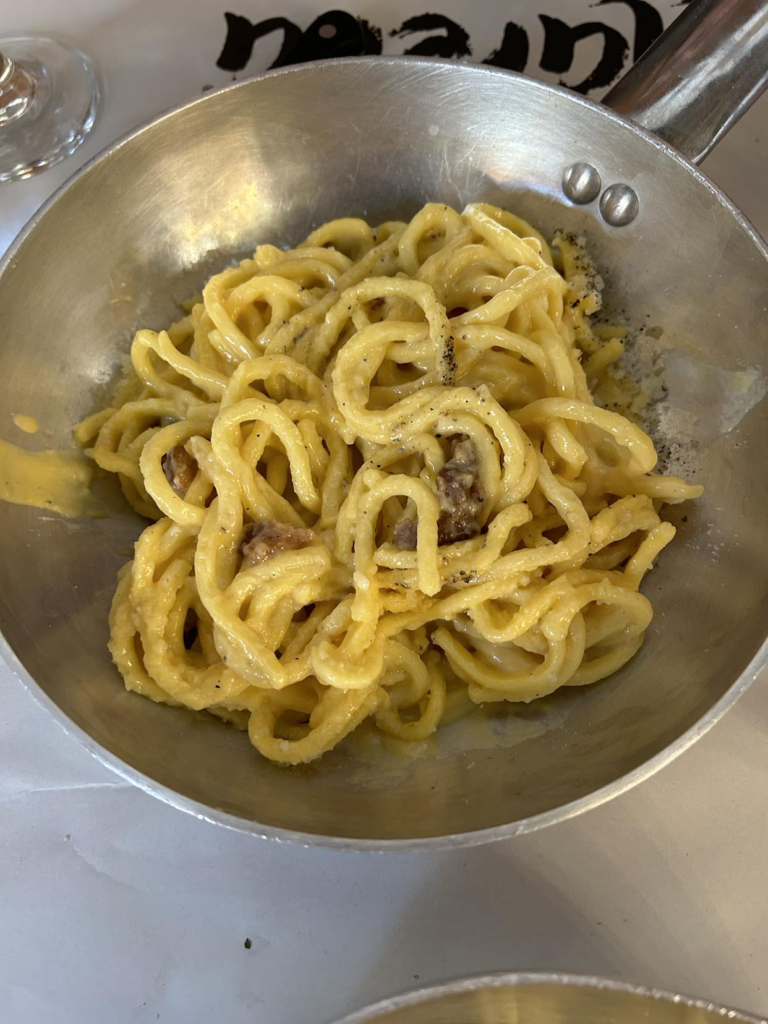
The artichoke was not as good as the one on the tour, but we could not find that restaurant again. It was a hole in the wall with two tables outside and four inside. We did not see a sign. The salad was great. What we had remarked on this trip is the few restaurants that even offered a green salad on the menu. At this point greens were very welcome and the salad had burrata and hard boiled eggs to add to the diversity on the plate. The capricciosa pizza was wonderful. However, by the time we got to it we had already consumed more than planned and there simply was not enough room for much.

We paired this meal with a bottle of a Lazio wine, which is the region directly surrounding Rome. Not many hear about their wines, but the federici SAPIENS Cesanese Del Piglio 2020 was as good as many Chiantis I have tried in Tuscany. Given the Lazio boarders on Tuscany this likely should be expected. The bottle is also fun in that it has a graphic of a monkey on the label with his hand over his eyes as if saying ‘what are these people thinking?’ I assume he is not reflecting his thoughts about the wine. It went very well with each dish.
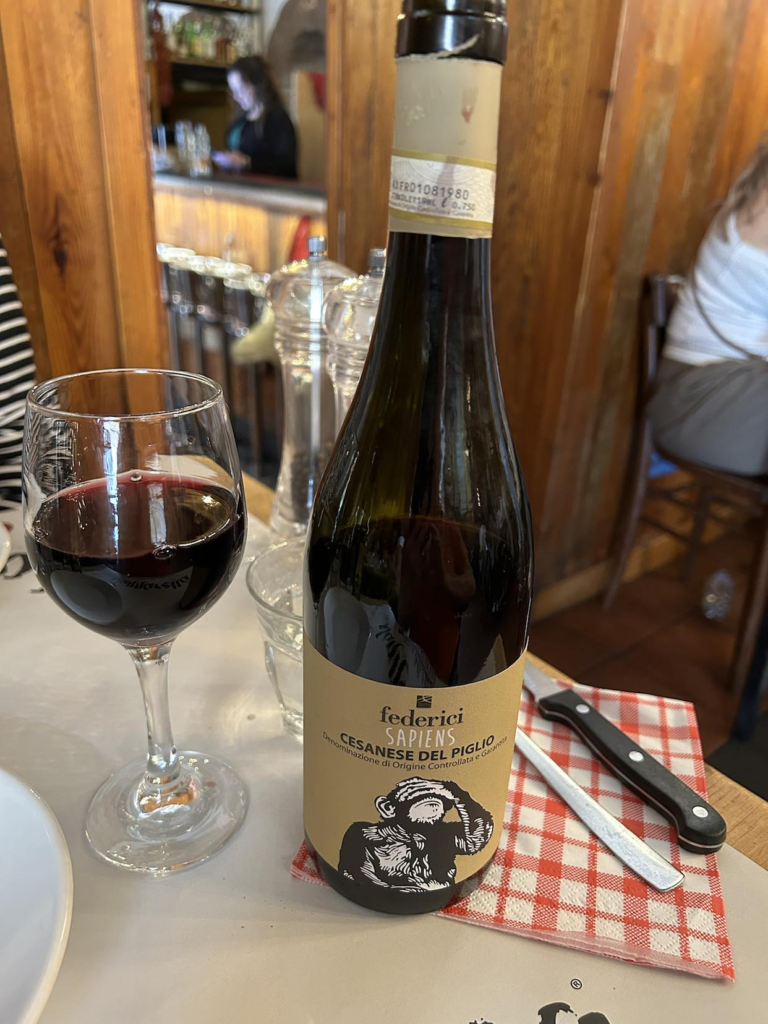
And then there is the good news. This whole meal cost us €85 including the wine and tip. The best value meal I have likely ever had in Rome or any large European city.



